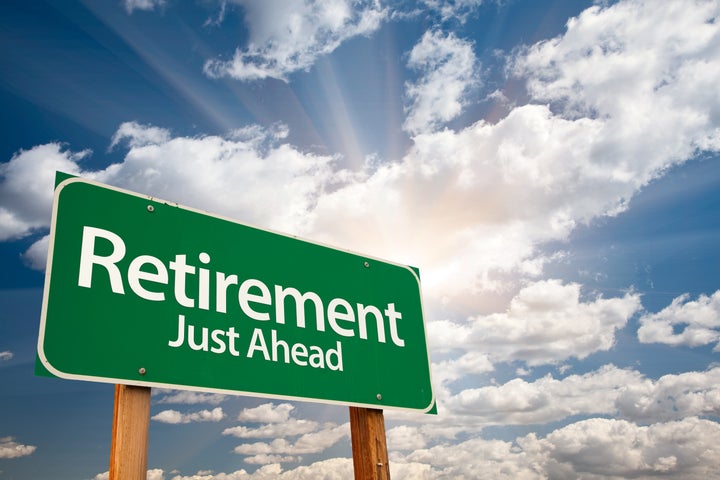
As an advocate for 401(k) participants I should be grateful that Frontline produced "Why You Can't Afford to Retire," which aired last night on PBS at 10 p.m.
Unfortunately, not only did the episode inaccurately portray the biggest flaws in the plans as high fees and risky stocks and not the puny employer contribution rate but it depended on input from Teresa Ghilarducci -- an academic whose employer offer a generous retirement plan -- who has literally proposed making everybody's 401(k) plan worse.
First, Ghilarducci has proposed lowering the employer and employee contribution rate to retirement accounts. Despite stating in a recent op-ed that Americans need to accumulate "roughly 20 times our annual income in financial wealth" in order to be able to retire, in her book When I'm 64, she proposed mandating a 5 percent contribution rate to employee accounts which "can be split equally between employer and employee." Given that employees typically contribute 5 percent of their paychecks and employers kick in a 3 percent contribution this would lower the combined contribution rate by three percentage points -- which is already three percentage points lower than the 8 percent employer contribution rate for regular pensions.
What's more, she has proposed replacing current 401(k) investments with ones that would produce lower investment returns. In testimony before the House Education and Labor Committee Ghilarducci proposed a "guaranteed retirement account invested in "special government bonds that would pay 3 percent a year, adjusted for inflation. Unfortunately, a 3 percent investment return would be less than half, over the long haul, of that of the stocks that participants typically invest in.
In addition, she believes the new plans should have the same management as public sector plans because pension funds "use the best professional managers that aren't available for retail accounts."
If public pensions are run professionally why did the SEC vote in 2009 to curb "pay to play" practices among public sector pension managers? Then there's the class action suit In 2009 by New York unions against a manager who invested their pension funds with Bernard L. Madoff Investment Securities LLC, according to the Albany Times Union. And while not every public pension makes reckless bets on Madoff-style Ponzi schemes, too many have taken risks with commodity futures, junk bonds and hedge funds.
According to The New York Times, "'In effect, they're going to Las Vegas,' said Frederick E. Rowe, a Dallas investor and the former chairman of the Texas Pension Review Board, which oversees public plans in that state."
Finally, Ghilarducci believes that the tax breaks in 401(k) plans go to the highest earners -- despite the fact that nobody under age 50 is allowed to contribute more than $17,500 a year because of the "contribution ceilings" -- with the result that nobody earning $117,500 or more can contribute enough to afford to retire even if their employers cough up generous contributions. I know this first hand, given that my husband's employer contributes the equivalent of 9 percent of pay -- the same rate that Australian employers are required to shell out. Yet despite socking away the maximum allowed he has accumulated less than one and a half times his annual salary at age 60. Luckily, we have adequate savings outside of the plan, which is likely not the case with his highly compensated colleagues given that employees are rarely, if ever, told how much they need to sock away to replace 70 percent of their "final pay" incomes.
As I pointed out in a previous post, Ghilarducci is not the only flawed academic who appears to lack a basic understanding of 401(k) plans and likely benefits from one of the most generous plans in the country. Alicia Munnell of Boston College has proposed that people simply work another five years to achieve an adequate nest egg and Laurence Kotlikoff of Boston University claims that most of us are saving too much. Employer contributions to the 403(b) plans at the universities where these so-called retirement experts work appear to be quite generous -- at least for tenured professors. Contribution rates at Boston College, Boston University and Ghilarducci's current employer, the New School for Social Research, range between 7 to 10 percent, depending on years of service and Ghilarducci's previous employer, the University of Notre Dame, contributes the equivalent of 10 percent of pay. Given that even most of the Fortune 100 companies don't offer regular pensions to new hires, a significant chunk of tenured academics appear to be among the few Americans that can afford to retire.
Don't get me wrong: We need to fix 401(k) plans. But don't throw the baby out with the bathwater. The most important fix is boosting the puny employer contribution rate to at least equal 6 percent of pay (9 percent for Fortune 100 companies) and pooling 401(k) assets so that employees can benefit from a higher exposure to stocks -- and therefore higher investment returns so they won't have to sock away as much. The last thing we need to do is make the plans even more inadequate than they are now.